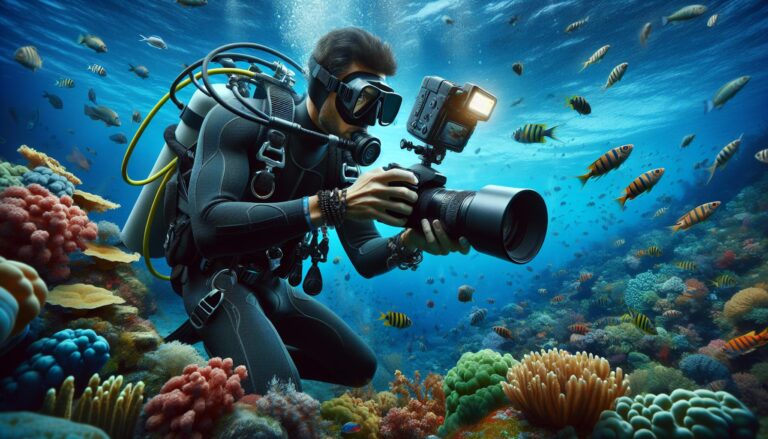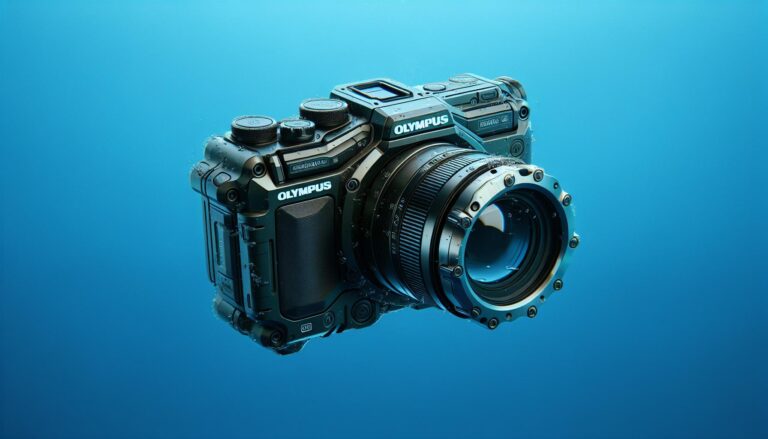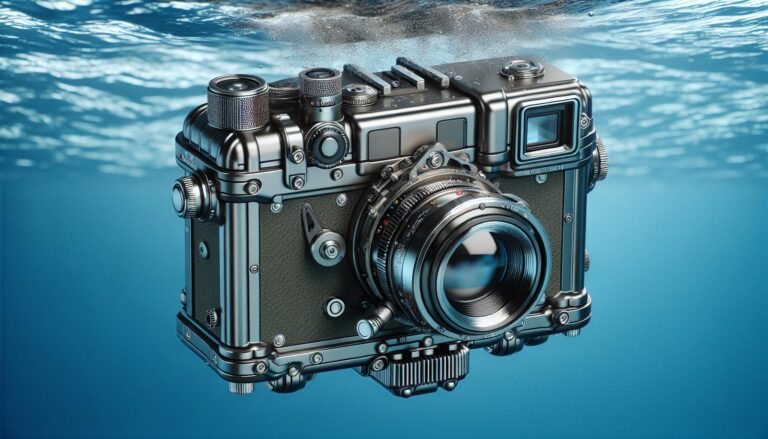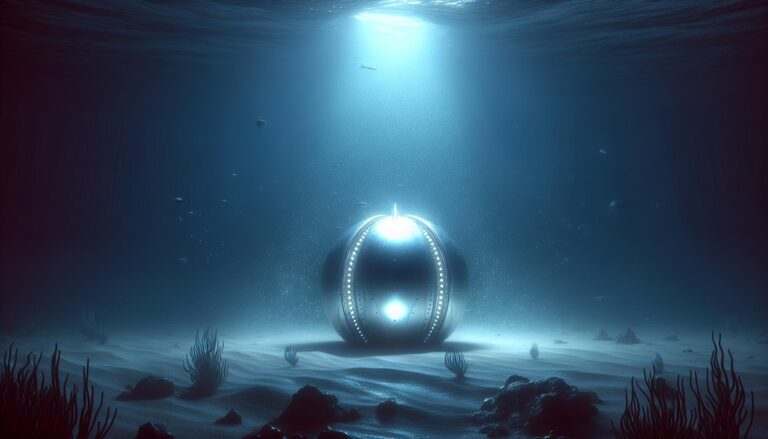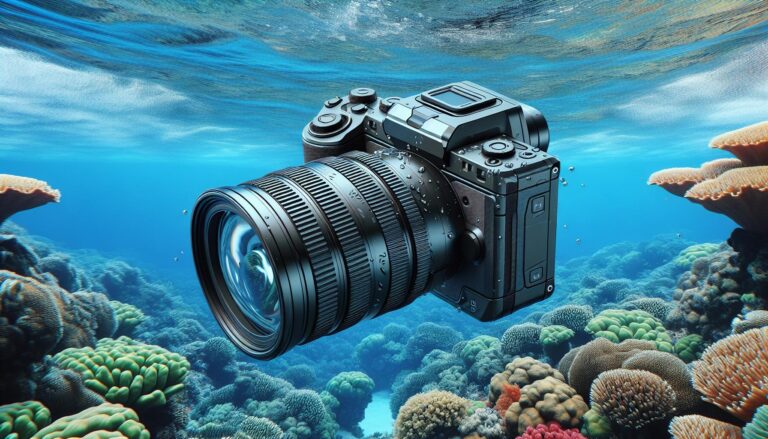Choosing the Best Camera for Underwater Photography: A Comprehensive Guide
Diving into the ocean’s depths with a camera in hand, ready to capture the unseen wonders of the underwater world, is a thrilling experience. But it’s not just about the excitement. It’s about choosing the right tool for the job – the best underwater camera.
In this digital age, the market’s flooded with a plethora of options, each claiming to be the best. So how do you navigate these waters? That’s where I come in. I’ll help you explore the top picks, their features, and what makes them stand out in the sea of choices.
So, whether you’re a seasoned diver or just dipping your toes into underwater photography, stick around. You’re about to embark on a journey to find the perfect camera to bring your underwater adventures to life.
Understanding Underwater Photography
Diving into the heart of understanding underwater photography, let’s explore its charm and the challenges it poses.
The Charm of Underwater Photography
Underwater photography’s true allure lies in its ability to reveal a world concealed beneath the sea surface, opening a gateway to a realm teeming with vibrant, bizarre, and enchanting inhabitants. Imagine capturing images of turtles leisurely snacking on sea grass or a vibrant school of fish skillfully evading a looming predator: these are moments experienced by few humans, let alone immortalized. Through photography, you’re not only observing these scenes; you’re preserving them.
Challenges in Underwater Photography
However, as captivating as it is, underwater photography is not without its difficulties. Distinctive lighting conditions, the movement of water, and the behavior of marine life all contribute to the complexity. On top of that, technical hurdles arise due to the difficulties in handling the camera equipment underwater. For instance, altering settings or changing lenses isn’t as straightforward when you’re submerged several meters deep. Nonetheless, overcoming these challenges enriches the triumph of frozen moments, providing an even more rewarding experience.
Key Features to Consider in a Camera for Underwater Photography
In the pursuit of capturing the unseen aquatic splendor, the choice of camera becomes pivotal. Here’s a closer look at the crucial factors that make a camera fit for purpose in the domain of underwater photography.
Water-resistance and Durability
An underwater camera’s sturdiness flits to the foreground in terms of importance. Its ability to resist water intrusion, coupled with robust build quality, shapes it as the right tool for underwater photography. For instance, the Olympus Tough TG-6, regarded highly for its ruggedness, can function flawlessly at depths of up to 50 feet. Moreover, it’s shockproof from 7 feet, crushproof up to 220 pounds, and freeze proof down to 14° F – demonstrating a high level of durability.
Image Quality
Image quality carries weight in the selection of an underwater camera. Factors such as resolution, sensor size, and low light performance directly contribute to a camera’s imaging prowess. Nikon’s Coolpix W300, for example, houses a 16MP sensor capable of producing high-resolution images. Additionally, it incorporates an anti-reflective coating on the image sensor’s surface, which reduces noise even in low-light underwater environments.
Ease of Handling and Operation Underwater
Ease of handling is another element to consider in an underwater camera. A camera must be comfortable to grip, intuitive in its control layout, and responsive to command execution even when you’re submerged. Canon’s PowerShot D30, with its ergonomically designed body, offers an intuitive control layout, perfect for underwater usage. Further, it provides fast image processing, which equates to quick command responses, making it popular among divers who need to react instantly to changing underwater scenarios.
Reviewing The Best Cameras for Underwater Photography
Stepping into this section, we delve deeper into the specifics of underwater cameras. What makes them great? Let’s dissect the distinct types – DSLR and Mirrorless, Compact, and Action Cameras – and understand their unique offerings for underwater photography.
DSLR and Mirrorless Cameras for Underwater Photography
DSLR and Mirrorless cameras make a compelling argument when it comes to capturing underwater brilliance. Equipped with superior sensor sizes, these cameras deliver top-notch image quality. Models like the Nikon D850 and the Sony A7R IV shine in this category, exhibiting high dynamic range, extraordinary resolution, and excellent low light performance. However, one must remember that a quality underwater casing is crucial to their performance beneath the sea’s surface.
Compact Cameras for Underwater Photography
Compact cameras, offering the perfect blend of portability and advanced features, are a charm for underwater photographers. Olympus Tough TG-6, a strong contender in this category, comes equipped with impressive water resistance and durability. Canon’s PowerShot D30 stands out with its ergonomic design and quick image-processing capabilities. It’s worth noting that Compact cameras often come with built-in waterproof characteristics, making them a cost-effective choice for underwater photography.
Action Cameras for Underwater Photography
When it comes to capturing action-packed underwater scenes, Action cameras are the go-to choice. Brands like GoPro have revolutionized this segment with their Hero line of cameras. For instance, the GoPro Hero 8 Black, waterproof up to 10 meters, offers fantastic image stabilization and crisp 4K video capabilities. While they don’t match up to the image quality of DSLRs or Mirrorless cameras, their robustness and ease of use make them popular among divers and snorkelers.
Comparing The Best Underwater Cameras
In this section, I’ll dive deeper into the nitty-gritty of three key factors for selecting a top-notch underwater camera: image quality, durability, and handling underwater. These aspects play an instrumental role in underwater photography and distinguish the best cameras from the rest.
Comparing Image Quality
High-quality images underwater, captivatingly vivid and incredibly detailed, set apart the best cameras. DSLR and mirrorless cameras, like the Nikon D850 and Sony A7R IV, excel in this area. They offer high image resolution, thanks to their large sensors which capture more light. Compact cameras such as Olympus Tough TG-6 and Canon’s PowerShot D30, while not matching the image quality of the previous group, still yield high-quality images. They owe this to their robust image processing algorithms.
Comparing Durability and Water-resistance
A crucial quality in underwater cameras is durability and water resistance. Action cameras like GoPro Hero 8 Black rise to the top in this group. These cameras display impressive resilience against water pressure and rough handling, with precious few rivals in this field. Compact cameras like Canon’s PowerShot D30 and Olympus Tough TG-6 also show commendable durability and water-resistance, serving reliably in the harsh underwater environment.
Comparing Handling and Operation Underwater
As for handling and operation underwater, two key factors include handy size and intuitive controls. In this regard, compact cameras take the lead. With their comfortable grip and user-friendly controls, models like the Olympus Tough TG-6 and Canon’s PowerShot D30 offer a seamless experience for divers. DSLRs and mirrorless cameras, despite their superior image quality, lag a bit here primarily due to their larger size and weight. However, experienced divers and professional photographers prioritize image quality and find ways to handle these cameras effectively.
How to Maintain Your Underwater Camera
Once you’ve picked the best underwater camera for your purposes, it’s crucial to keep it in prime condition. Proper maintenance can ensure it serves you well, capturing those stunning underwater shots time and again.
Cleaning and Storage Tips
Cleaning plays a crucial role in keeping your underwater camera in top condition. After each dive, rinse it thoroughly with fresh water to wipe off any salt, sand, or other particles that may have stuck to it. Use a soft cloth to dry it off, ensuring no moisture lurks in the camera’s crevices, which can lead to corrosion.
Proper storage also impacts the longevity of your camera. Store it in a cool and dry place, away from direct sunlight. Remove the battery and memory card when not in use for extended periods. Try using silica gel packs in the storage area, which can help control the humidity levels and further protect your camera from moisture damage.
Ensuring Longevity of Underwater Cameras
Regular maintenance and servicing can significantly enhance the longevity of your underwater camera. Periodically inspect the O-rings, which help keep water out of the camera. If they appear damaged or dried out, they’ll need replacing. Don’t forget—the application of silicon grease can make the O-rings work efficiently and hence, enhance the longevity of your equipment.
Moreover, it’s prudent to service your camera at a trusted service center or from the manufacturer itself, especially if you notice any major issues like water leaks. Remember, investing in regular checks and proper maintenance safeguards the functionality of your camera and saves you from expensive repair costs in the future.
Conclusion
Choosing the right underwater camera isn’t just about the type. It’s about understanding your needs and matching them to a camera’s strengths. Whether it’s a DSLR, Mirrorless, Compact, or Action camera, each has its unique features and advantages. But remember, no matter how good your camera is, it won’t last without proper care. Cleaning after use, storing correctly, and regular maintenance are vital to keep your camera performing at its best underwater. Don’t overlook these steps; they’re just as crucial as the camera itself. So, dive in, select wisely, and take care of your investment. Happy shooting!


